

60 Years and Counting
- the future -.
NASA’s future will continue to be a story of human exploration, technology, and science. We will go back to the Moon to learn more about what it will take to support human exploration to Mars and beyond. We will continue to nurture the development of a vibrant low-Earth orbit economy that builds on the work done to date by the International Space Station. NASA engineers will develop new technologies to improve air transport at home and meet the challenges of advanced space exploration. Our scientists will work to increase an understanding of our planet and our place in the universe. We will continue to try to answer the question, “Are we alone?”
Unlike the way the space program started, NASA will not be racing a competitor. Rather, we will build upon the community of industrial, international, and academic partnerships forged for the space station. Commercial companies will play an increasing role in the space industry: launching rockets and satellites, transporting cargo and crew, building infrastructure in low-Earth orbit. NASA will continue to be a global leader in scientific discovery, fostering opportunities to turn new knowledge into things that improve life here on Earth.
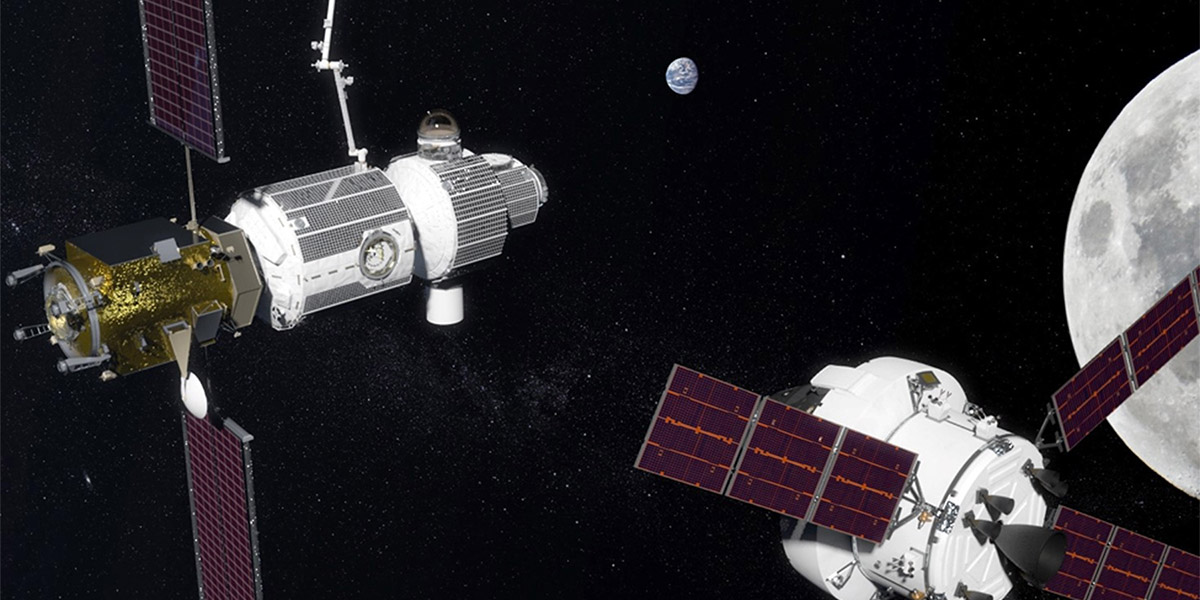
Artist’s concept, NASA’s gateway in lunar orbit. It will consist of at least a power and propulsion element as well as habitation, logistics, and airlock capabilities. The power and propulsion element will be the first component to launch for placement near the Moon in 2022, with additional elements launching in subsequent years. Image Credit: NASA
In the half-century since people visited the Moon, NASA has continued to push the boundaries of knowledge to deliver on the promise of American ingenuity and leadership in space. And NASA will continue that work by moving forward to the Moon with astronauts landing on the lunar South Pole by 2024.
NASA is implementing the President’s Space Policy Directive-1 to “lead an innovative and sustainable program of exploration with commercial and international partners to enable human expansion across the solar system.” NASA stands on the verge of commercializing low-Earth orbit. These experiences and partnerships will enable NASA to go back to the Moon in 2024 – this time to stay. NASA’s backbone for deep space exploration is the biggest rocket ever built, the Space Launch System (SLS), the Orion spacecraft and the Gateway lunar command module. With its partners, NASA will use the Gateway lunar command module orbiting the Moon as a staging point for missions that allow astronauts to explore more parts of the lunar surface than ever before
Aeronautics
NASA’s work in aeronautics has made decades of contributions to aviation, national security and our economy. Ongoing research and testing of new aeronautics technologies are critical in these areas and will help the U.S. lead the world in a global aviation economy, with increasing benefits worldwide. Developing quiet supersonic transport over land, and quieter, cleaner aircraft technologies are two ways NASA is transforming aviation.
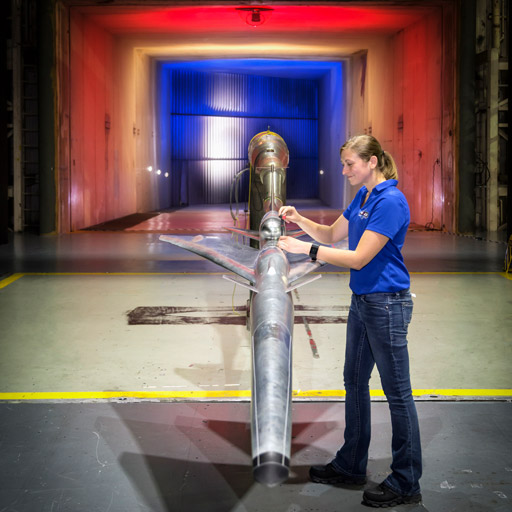
Image Credit: NASA/Chris Giersch
Quiet Supersonic Technology
Testing the Quiet Supersonic Technology (QueSST) Preliminary Design Model inside NASA Langley Research Center’s 14-by-22-foot Subsonic Tunnel. The QueSST Preliminary Design is the initial design stage of NASA’s planned Low-Boom Flight Demonstration experimental airplane, or X-plane, which aims to reduce fuel use, emissions, and noise, and to make supersonic flight over land possible.
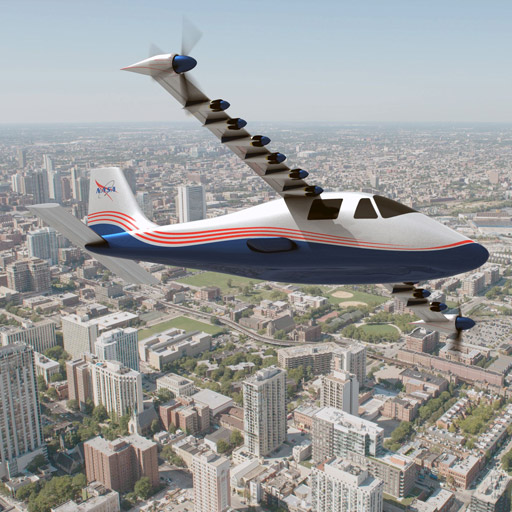
Image Credit: NASA Graphic / NASA Langley/Advanced Concepts Lab, AMA, Inc.
Artist’s concept of NASA’s X-57 ‘Maxwell’ aircraft. The X-57 will be the first all-electric X-plane and will be flown to demonstrate the benefits that electric propulsion may yield for the future of aviation. The goal of the X-57 is to achieve a 500-percent increase in high-speed cruise efficiency, zero in-flight carbon emissions, and flight that is much quieter for the community on the ground.
Space exploration likely comes to mind when you think of NASA, but NASA’s work has many benefits that are closer to home for Earth and its citizens. Earth science research will continue, with new technologies that will help us understand Earth as a system and its responses to natural or human-induced changes. Scientists utilize satellites, airborne missions, and ground-based observations to gather data about the ongoing natural and man-made changes to Earth’s land, water, and air to help improve the quality of life around the world.
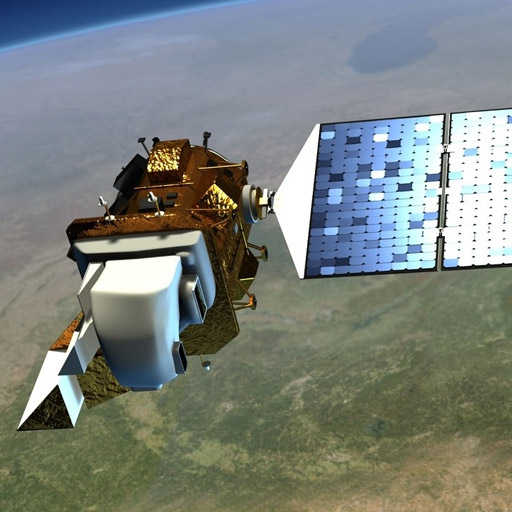
Image Credit: NASA
NASA’s best known Earth Science program will continue with the launch of Landsat 9 in 2020. Landsat 9 will extend our ability to measure changes on the global land surface at a scale where we can separate human and natural causes of change. When land use and resource availability issues arise, Landsat 9 will help decision makers make informed management decisions. Landsat 9 will thus contribute a critical component to the international strategy for monitoring the health and state of the Earth.

Artist’s concept for the Surface Water and Ocean Topography (SWOT) mission, targeted for launch 202, will make the first global survey of Earth’s surface water. SWOT will monitor how water bodies change over time and support societal needs such as dams and shipping.
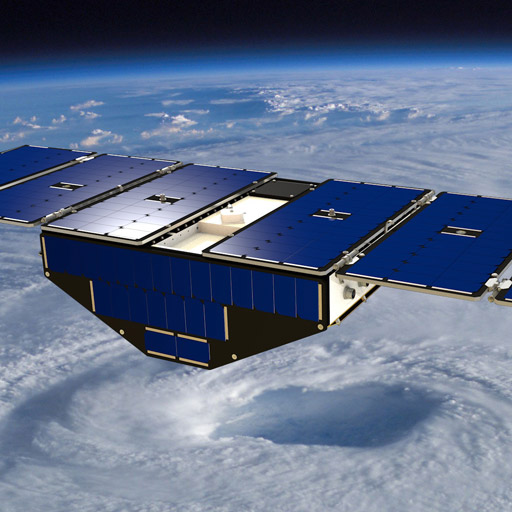
Artist’s concept of one of the eight Cyclone Global Navigation Satellite System (CYGNSS) satellites deployed in space above a hurricane. CYGNSS uses GPS technology to help measure ocean winds, which will give scientists an earlier and more detailed view of a storm’s strength and direction.
When NASA was created 60 years ago, it had to invent the technology to get where we needed to go, and we will continue to push the boundaries of technology into the future. New emerging technologies that open opportunities for research and exploration with minimal investments include NASA’s small satellites. Exploring deep space and three-year missions to Mars pose new challenges: Can you take enough? Can you grow it or make it in space? Can you do your own repairs and maintenance? As before, NASA will adapt solutions to these and other challenges into technologies that will improve life at home.

Image Credit: NASA/Emmett Given
International Space Station’s 3D printer manufactures objects out of plastic. NASA is developing more advanced printers that can add metals and other materials like regolith into the mix. Being able to make parts in space will come in handy during emergencies.
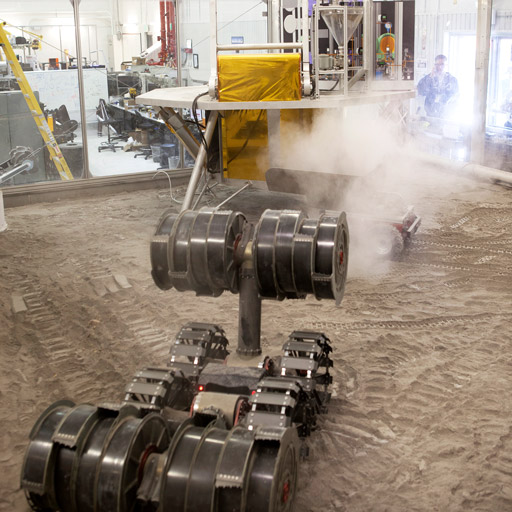
NASA’s Regolith Advanced Surface Systems Operations Robot (RASSOR) excavating simulated extraterrestrial soils. NASA is developing technologies to drill into regolith (space word for “soil”) on the Moon, Mars, and asteroids and to convert it into oxygen, drinkable water, other products to support human and plant life, consumables, and fuel sources.
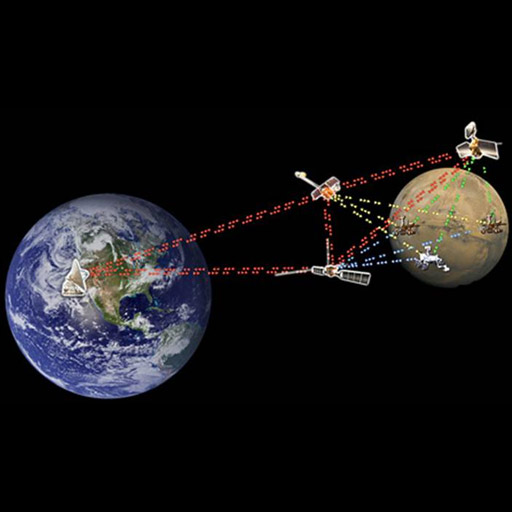
Communicating from Earth to any spacecraft is a complex challenge, largely due to the extreme distances involved. When data are transmitted and received across thousands, millions, and even billions of miles, the delay and potential for disruption or data loss is significant. Advanced communication technologies are essential to enhance deep space exploration for both robotic and human missions. Delay/Disruption Tolerant Networking (DTN) is NASA’s solution to reliable internetworking for space missions. DTN will enable a Solar System Internet with automated data delivery between users no matter how distant and intermittent their connections may be.
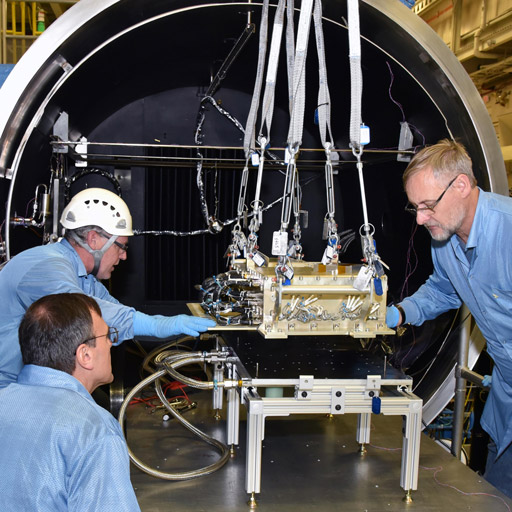
Technicians test a flight modem in a thermal vacuum chamber for NASA’s Laser Communications Relay Demonstration (LRCD) mission. The modems encode data into laser light to be transmitted to the ground from a satellite orbiting at the same speed Earth is turning. Optical communications technologies can dramatically improve communications between spacecraft and Earth—10 to 100 times better than radio communications’ data rates.
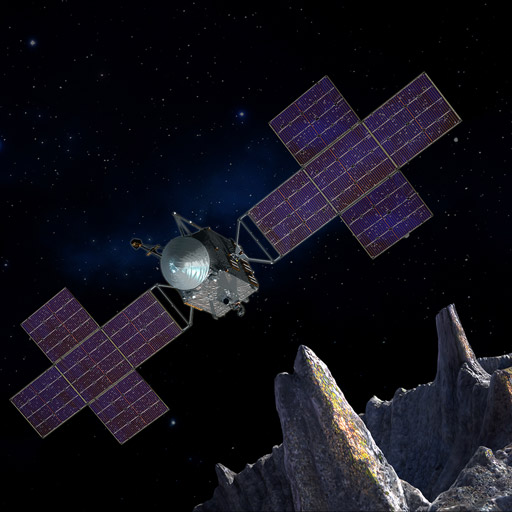
The Deep Space Optical Communications (DSOC) package aboard NASA’s Psyche will use a light or laser communications to transmit more data to Earth in a given amount of time. The DSOC seeks to increase spacecraft communications performance and efficiency without increasing the mission burden in mass, volume, power and/or spectrum.
Human Spaceflight
Nearly a half-century ago, Apollo 11 astronaut Neil Armstrong walked on the Moon. NASA is now preparing for an ambitious new era of sustainable human spaceflight and discovery. The agency is building the Space Launch System rocket and the Orion spacecraft for human deep space exploration. With the help of commercial and international partners, NASA will develop new opportunities in lunar orbit, including a platform to aid surface exploration and serve as a gateway to Mars. The International Space Station will continue to serve as the world’s leading laboratory where researchers can conduct cutting-edge research and technology development to enable human and robotic exploration of the Moon and Mars. The space station will also facilitate the growth of additional privately owned spaceships for continued research and transportation in low-Earth orbit.

The Bigelow Expandable Activity Module (BEAM), constructed by Bigelow Aerospace, attached to the International Space Station’s Tranquility module to test the technology. Lightweight expandable or “inflatable” habitats require much less transport volume for potential future space missions. The modules expand after being deployed in space, providing a comfortable area for astronauts to live and work.
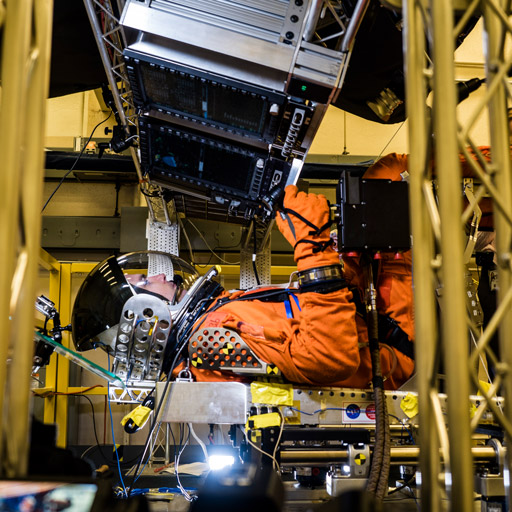
Image Credit: NASA/Rad Sinyak
Orion Spacecraft
Testing for the new Orion spacecraft. In a lab at NASA’s Johnson Space Center in Houston, engineers simulated conditions that astronauts in space suits would experience when the new Orion spacecraft is vibrating during launch atop the agency’s powerful Space Launch System rocket on its way to deep space destinations.
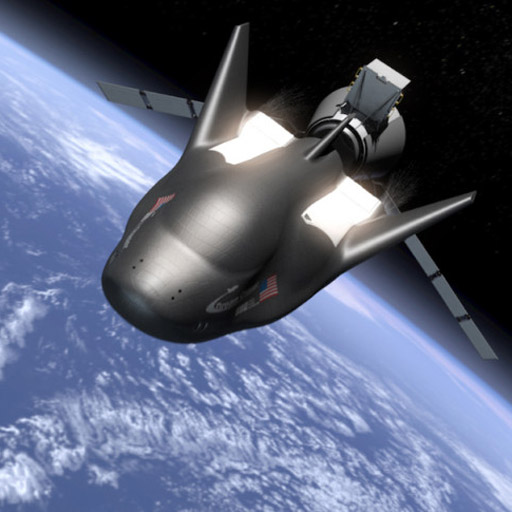
Image Credit: Sierra Nevada Corp
Dream Chaser
Sierra Nevada Corporation’s Dream Chaser cargo spacecraft will join NASA’s commercial cargo providers Orbital ATK and SpaceX to deliver research and supplies to the International Space Station. The Dream Chaser also will be able to bring research back to Earth, and Sierra Nevada Corporation also is developing a crew version of the spacecraft for commercial use.
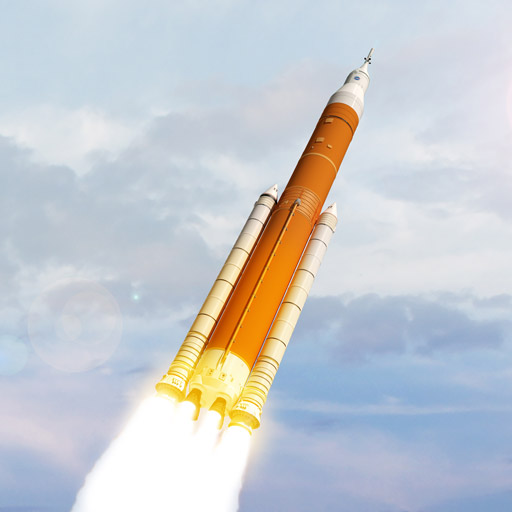
NASA's Space Launch System will be 364 feet tall in the crew configuration and will have a 115-ton lift capacity. Image Credit: Sierra Nevada Corp
Space Launch System
NASA’s Space Launch System, or SLS, is a powerful, advanced launch vehicle. With its unprecedented power and capabilities, SLS will launch crews of up to four astronauts in the agency’s Orion spacecraft on missions to explore multiple, deep-space destinations. Offering more payload mass, volume capability and energy to speed missions through space than any current launch vehicle, SLS is designed to be flexible and evolvable and will open new possibilities for payloads, including robotic scientific missions to places like Mars, Saturn and Jupiter.
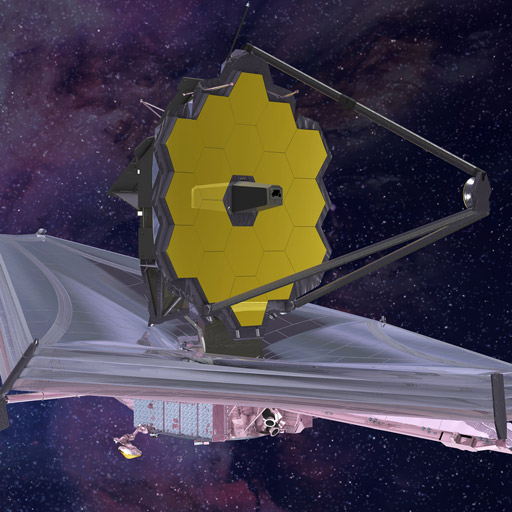
James Webb Space Telescope
The James Webb Space Telescope, a NASA-led project in collaboration with the European and Canadian space agencies, will be world’s next premier space science observatory. Webb will solve mysteries of our solar system, look beyond to distant worlds around other stars, and probe the mystifying structures and origins of our universe. Webb will study every phase in the history of our universe, ranging from the first luminous glows after the Big Bang to the formation of solar systems and the evolution of our own solar system. Webb will open up new windows to study the atmospheres of planets around other stars and how it relates to exoplanet systems.
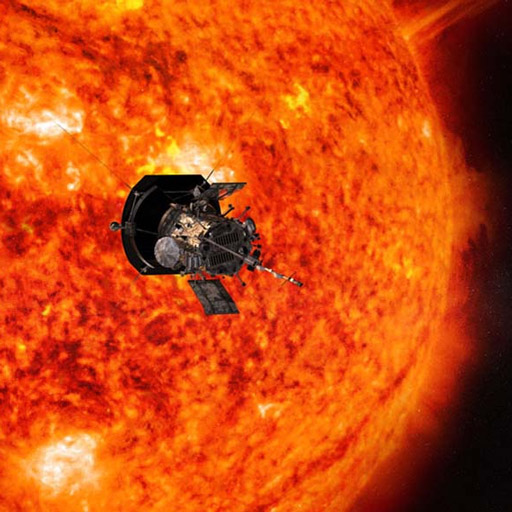
Parker Solar Probe
NASA’s Parker Solar Probe will be the first-ever mission to "touch" the Sun. The spacecraft, about the size of a small car, will travel directly into the Sun's atmosphere about 4 million miles from our star's surface.
Solar System
NASA will be returning to places previously explored with ambitious new missions and new technologies. Much remains to be learned about the Moon and how we might use its soils and other resources to support human habitation elsewhere. The complex journey to Mars is challenging NASA and its partners to figure out how to get there, land there, live there and get home. NASA will also be searching for clues of life throughout our solar system.

Mars 2020 Rover
NASA’s Mars 2020 Rover will be instrumental to NASA’s Mars Exploration Program, which seeks to determine whether life ever arose on Mars, to characterize the climate and geology of the Red Planet, and to prepare for human exploration.

Europa Clipper
NASA's Europa Clipper will conduct detailed reconnaissance of Jupiter's moon Europa and investigate whether the icy moon could harbor conditions suitable for life beneath its icy crust.
This website will offer limited functionality in this browser. We only support the recent versions of major browsers like Chrome, Firefox, Safari, and Edge.
Beyond the planet: Charting the future of the space sector

With countries and companies racing to explore space, the sector is likely to see massive changes in the next 30 years.
Major events can unfold even within a single week: China has just become the second nation to plant its flag on the Earth’s moon, Amazon CEO Jeff Bezos announced his space company Blue Origin will take the first woman to the moon, and Japan’s Hayabusa-2 capsule has returned safely to Earth with asteroid samples.
This buzz of space activity is unlikely to abate. SpaceX has launched nearly 1,000 small satellites for its Starlink constellation to date and is reportedly planning a crewed mission to Mars by 2026. NASA has also announced a mission to send astronauts to the moon by 2024 with plans to set up a lunar base camp.
In a panel at the virtual Web Summit 2020, astronomer Jonathan McDowell from the Harvard-Smithsonian Center for Astrophysics and Peter Martinez, Executive Director of the Secure World Foundation, looked at where the space industry might be 30 years from now.
Who will be the space traffic cops?
“We are at the beginning of a new [space] investor revolution,” said McDowell, noting the number of active satellites has been skyrocketing.
“The rules of the road are not set up for these satellites,” he asserted, estimating we could see about 100,000 satellites in low Earth orbit (LEO) within the next decade.
While the use of radio frequencies in outer space has been regulated since 1963 within the ITU framework, space traffic management (STM) does not exist for the current scenario, McDowell explained. In this new space environment, routes must be managed to avoid accidents.
The dangers of overcrowding in space were flagged by NASA scientist Donald Kessler in 1978. The so-called “Kessler Syndrome” warned that one day the low Earth orbit would become so crowded with satellites and debris that it would lead to frequent collisions that impede space explorations.
More than 40 years later, Rocket Lab CEO Peter Beck has warned how his company was finding it difficult to make a clear path for its rockets to launch new satellites. McDowell believes there is a need for an international body to manage this space traffic problem.
“Space is intrinsically global, so it has to be at the UN level,” he said.
The Committee on the Peaceful Uses of Outer Space (COPUOS) was set up by the UN General Assembly in 1958 and currently serves as a capacity building resource for countries to expand their space capabilities and accelerate sustainable development through space.
“Individual countries can sign up for a sensible rule because we all want to get along. It’s not enough for the US to have its space surveillance. There has to be an international committee,” McDowell added.
Martinez agreed that STM will have to be addressed at a global scale. “Problems will begin at the national level. And best practices and development of regulations at a national level will be a good model. The UN is certainly a good forum of socialization,” he added.
Martinez noted the debate underway about whether these changes must follow a top-down or bottom-up approach. “The UN Committee will play a part in this. Elements foundational to STM are under discussions in the Committee even though those are not a part of it,” pointed out Martinez.
Looking ahead to 2050
Activities in space have rapidly evolved compared to the first 50 years of exploration, said Martinez. With diverse actors, the kind of events taking place now did not exist a decade ago.
Activities like servicing and refuelling [satellites] while in orbit will be foundational in the development of the space economy, he added.
Martinez also surmised that the future might be seeing greater use of space by militaries. In a meeting of the United Nations Committee on the Peaceful Uses of Outer Space in 2019, it was noted that “preventing conflicts in outer space and preserving outer space for peaceful purposes” is more necessary than ever.
Martinez put forth the different scenarios likely to emerge in the future. For him, the two dominant forces to consider are cooperative governance and commercial space.
He likened the scenario where cooperative governance and commercial space flourishes to the epic Stanley Kubrick film ‘2001: A Space Odyssey’. “We will have a destiny in space and in the solar system like in the movie, with a space economy worth trillions of dollars and contributing to [global] GDP,” said Martinez.
But if the commercial space sector evolves more rapidly while cooperative governance lags, [then] the situation will be akin to the film ‘Elysium’ where space is full of opportunities but only for the few, Martinez warned. Actors here will be driven by their self-interest, he added.
According to Martinez, while governance issues might be sorted, a third possible future in space does not unfold because of climate change. The fourth scenario, Martinez concluded, sees governance issues being ignored and military confrontation extending into space, further exacerbating the space debris problem.
“We are in that second commercial-dominated track now,” suggested McDowell. Commercial activities had been negligible until the end of the Cold War and have exploded in the past few years, he noted. “Unless governance starts to happen quickly, we will be in that irredeemable ‘free for all’,” McDowell warned.
Martinez called the first scenario the “optimistic, inclusive and expansive track for humanity in space”, noting that commercial space exploration “is not a bad thing. It is a good thing.”
The best possible future is that governance keeps pace with commercial space, Martinez said.
This scenario will come to fruition, he added, when states begin to accept dangers of conflict in space, adopt voluntary testing in low Earth orbit and practice cooperative space traffic management.
Responsible space solutions
McDowell called for a debris committee composed of experts from different space agencies. “Establish norms that can then be taken up at the governance level,” he advocated.
Martinez added that beyond norms, there was a need for multi-faceted regulatory and behavioural solutions. For instance, he called for venture capitalists that practice responsible investment in space. “So we don’t have people rushing in to invest in constellations when you have satellites in orbit that are not being used or controlled,” he said.
This absence of rules related to the physical positioning of satellites in space is in sharp contrast with the existing ITU rules contained in the Radio Regulations about the management of radio frequencies in outer space.
Factors such as planetary protection, space environment and public pressure will be important to make this happen, said McDowell. When asked about discoveries and searches for microbial life in the solar system, both experts highlighted the importance of protection and responsibility.
“This is an ethical question. We need to be careful and make sure to even sterilize space probes,” McDowell said, calling for caution when deciding on destinations in the solar system to explore or protect.
“Finding other life will be a watershed moment for humanity. It will prove once and for all that we are not alone. It will have a profound effect on society and the way we see ourselves in the universe,” said Martinez.
ITU encourages anyone working on space-related activities, from research to commercial ventures, to get involved in the activities of the ITU Radiocommunication Sector, either through their national delegation or by seeking membership for direct participation.
Watch the ITU Satellite Webinar series for the current technical and regulatory situation, evolution, and trends in the field of satellite communications.
Image credit: SpaceX via Pexels
Related content
Space sustainability: why itu why now, final acts wrc-23, lunar exploration poised to intensify.
This information is available only to people with TIES access.
Privacy Overview
The future of space exploration: How astronomy, space travel and the search for life may change by 2049 (video)
Celebrate 25 years of covering countless advancements in space exploration and astronomy with Space.com and guests.
Celebrating 25 years of covering countless advancements in space exploration and astronomy, Space.com hosted a live virtual panel to discuss some of the most impactful discoveries and what may still be yet to come.
Joining Space.com's Editor-in-Chief Tariq Malik, who moderated the discussion, were three panelists, including Dr. Sara Seager, an astrophysicist and professor at Massachusetts Institute of Technology, Cambridge, Dr. John Mulchaey, director of the Carnegie Observatories overseeing the Giant Magellan Telescope, and Dr. Tom Marshburn , chief medical officer for Sierra Space and former NASA astronaut and three-time spaceflyer.
The panel, held on July 17 in honor of Space.com's 25th anniversary, focused on accomplishments in the fields of exoplanet research, the search for life , observing the early universe and human spaceflight, as well as new technology that could open even more doors to discovery.
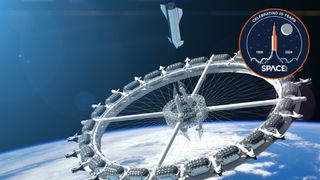
"We now know of 1,000s of planets around nearby stars , and there have to be trillions of them in our galaxy alone," Seager said. "So just the fact [of] moving that from science fiction to science fact is a momentous achievement of the last quarter century."
Over the last two and half decades, we've also made great strides in probing the early universe , revealing the first stars and galaxies that formed after the Big Bang, which, in Mulchaey's opinion, is one of the biggest achievements in astronomy.
It's a "field that's actively changing everyday right now with the James Webb Space Telescope . It's super exciting," Mulchaey said. "25 years ago, I was just out of grad school and we only knew of objects that we could see maybe 10 billion years back in time, and now we're almost back to the Big Bang."
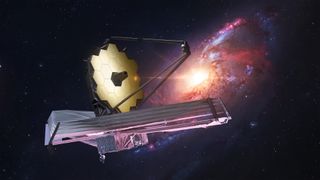
Mulchaey oversees Carnegie's main campus in Pasadena as well as The Observatories' large-telescopes facility in Las Campanas, Chile, where the Giant Magellan Telescope — the world's largest optical telescope — is currently under construction. Expected to become operational by the early 2030s, the telescope will survey the distant universe and look for signs of life beyond Earth.
Get the Space.com Newsletter
Breaking space news, the latest updates on rocket launches, skywatching events and more!
Human spaceflight has also changed tremendously over the past 25 years, from the Space Shuttle era, to the evolution and continuous habitation of the International Space Station and SpaceX, which kickstarted commercial spaceflight.
"Figuring out how humans can continue to live in space [for] six months to a year … I think that's one of the greatest things; a barrier that we've broken down, that's going to enable us to spend years in space," Marshburn, who flew on three spaceflights, including STS-127, Expedition 34/35 and Expedition 66/67 as part of the SpaceX Crew-3 , and now works for the commercial space company Sierra Space, said during the panel. He later explained how the private sector utilizes "advanced innovation, agility and speed to make sure that we can continue everything we need to do in low Earth orbit to enable NASA to continue its exploration mission."
Sierra Space's Dream Chaser space plane is slated to launch later this year, expanding capabilities for transporting cargo to the space station. The company is also working on an inflatable habitat, which would offer greater access to space.

"Several companies are coming together to provide this kind of destination for low Earth orbit," Marshburn said, adding that the goal is to "get into lunar orbit and to have habitats on the lunar surface; to include ways of getting out of your landing vehicle into that habitat [such as] tunnels, so we can begin to develop a space base."
And, with the growing number of private spaceflight companies who can help mass produce and launch technology, Seager argues is the opportunity for smaller focus missions that can be accomplished in less time.
"It can be a huge game changer," Seager said. "Instead of waiting 20, 30, 40 years for your mission, to have lots of frequent small missions that build on each other, or if you dead end, they go off in a new direction."
— Looking ahead to the next 25 years of private space stations
— The greatest astronomical discoveries of the past 25 years
— Where will we be in space in 2049? A look at spaceflight over the next 25 years
This, however, requires a "paradigm shift," according to Mulchaey. The panelists agreed that more focused projects can be beneficial and they expect to see more of them in the future as "complementary" to larger NASA initiatives.
The panelists also discussed the future of artificial intelligence, how to best search for signs of life, ethical use of space and what they each hope to see accomplished in the next 25 years.
Visit Space.com to catch up on our 25th anniversary coverage .
Join our Space Forums to keep talking space on the latest missions, night sky and more! And if you have a news tip, correction or comment, let us know at: [email protected].
Samantha Mathewson joined Space.com as an intern in the summer of 2016. She received a B.A. in Journalism and Environmental Science at the University of New Haven, in Connecticut. Previously, her work has been published in Nature World News. When not writing or reading about science, Samantha enjoys traveling to new places and taking photos! You can follow her on Twitter @Sam_Ashley13.
Polaris Dawn crew flies higher than 1966 Gemini 11 orbital record
Space MacGyver: NASA astronaut and inventor Don Pettit eager to return to ISS on Sept. 11
Meet the NASA science flying on SpaceX's Polaris Dawn private astronaut mission
Most Popular
- 2 What's behind the Martian methane mystery?
- 3 Mystery of dwarf planet Ceres' origin may finally be solved, thanks to retired NASA spacecraft
- 4 Watch a Russian Soyuz rocket launch 3 astronauts to the ISS today
- 5 Polaris Dawn crew flies higher than 1966 Gemini 11 orbital record
Visionary Tech Concepts Could Pioneer the Future in Space

Illustrations of the projects that were selected for Phase I of the 2021 NASA Innovative Advanced Concepts (NIAC) program.
Dozens of concepts are being presented at this year’s NASA Innovative Advanced Concepts Symposium, including eight led by technologists from NASA’s Jet Propulsion Laboratory.
NASA missions make it seem like the future is now – rovers exploring Mars with cutting-edge gadgets, a spacecraft venturing home with an asteroid sample, and a complex space telescope peering at the early universe. So, what’s the next big thing? What might space missions in 2050 and beyond set out to discover?
One small NASA program aims to see what could be possible. The NASA Innovative Advanced Concepts (NIAC) program, part of the agency’s Space Technology Mission Directorate, funds early-stage research into sci-fi sounding, futuristic technology concepts. The goal is to find what might work, what might not, and what exciting new ideas researchers may come up with along the way .
During NIAC’s annual Symposium Sept. 21-23, 2021, researchers will present ideas that could one day be game-changers in space. Watch the event to learn more about these four technology concepts and more.
1. Swimming micro-robots for ocean worlds.
Ocean worlds, where liquid oceans lie beneath miles of icy crust, are some of the most likely locations in our solar system to harbor life – an enticing prospect for scientists. Accessing and exploring these aquatic environments present unique challenges. Ethan Schaler , a robotics mechanical engineer at NASA’s Jet Propulsion Laboratory in Southern California, is researching one promising idea for exploration: Using 3D-printed, centimeter-scale robots equipped with sensors and actuators. A mothercraft that drilled through the ice and deployed the micro-bots would also wirelessly control them using ultrasound waves.
Get the Latest JPL News
2. Long-reach crawling and anchoring robots for Martian caves.
While swimming robots could be ideal for some destinations, others will require something with a firmer grip. Marco Pavone , an associate professor at Stanford University, is developing a potential solution. His ReachBot concept could quickly crawl through caves, using extendable booms to grasp over long distances. Its various features would allow small and lightweight robots to move around in tricky environments, such as vertical cliff walls or the rocky and uneven floors of caves on Mars.
3. Lightweight deployable structures that expand in space.
Getting extra-large spacecraft off Earth takes lots of planning, as the size of what can go to space depends on how much a rocket can fit. Multiple launches and in-space assembly have proven successful in the past, but there could be another way. Assistant professor at Carnegie Mellon University Zachary Manchester is considering ways to integrate recent advances in mechanical metamaterials into a lightweight deployable structure design. Such a structure could be launched inside a single rocket fairing and then deploy autonomously to a final size of the length of 10 football fields.
4. Seeding asteroids with fungi to create space soil.
Space habitat concepts come in all shapes and sizes. But all designs have a common challenge requiring innovative thinking: How will space travelers sustain themselves during long journeys? Jane Shevtsov , working with Trans Astronautica Corporation, offers creating soil from carbon-rich asteroid material. The fungi would physically break down the material and chemically degrade toxic substances. Similar processes take place on Earth, like oyster mushrooms cleaning up petroleum-contaminated soil. The NIAC research aims to find a way for future space habitats to have ample green space and robust agricultural systems.
The 2021 NIAC symposium will kick off Tuesday, Sept. 21. A keynote address by the Mars 2020 Planetary Protection Lead Moogega Cooper will air on NASA Television, the agency’s website , and the NASA app .
NASA selects NIAC proposals through a peer-review process that evaluates innovation and technical viability. All projects are still in the early stages of development, with most requiring a decade or more of technology maturation. They are not considered official NASA missions.
To learn more about NIAC, visit:
www.nasa.gov/niac
News Media Contact
Rob Margetta
NASA Headquarters, Washington
202-763-5012
Ian J. O’Neill
Jet Propulsion Laboratory, Pasadena, Calif.
818-354-2649
- Workshop programme
- White Papers
- Senior Committee
- Topical Teams
- Call for Membership of Topical Teams
- Call for White Papers
voyage 2050

Updates - Voyage 2050
Voyage 2050 long-term planning of the esa science programme, updates on voyage 2050 .
25 March 2024
The report from the Expert Committee for the Large-class mission in ESA's Voyage 2050 plan covering the science theme "Moons of the Giant Planets" is published today. The report can be downloaded here . See also the news article Saturn's moon Enceladus top target for ESA .
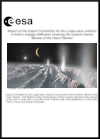
8 November 2023
Update on the Call for a Medium-size mission: The space science community has narrowed down the shortlist for ESA's next 'medium' mission (M7) to three finalists: M-MATISSE, Plasma Observatory, and THESEUS. Following further study, one will be selected for implementation as the newest addition to ESA's space science mission fleet. Read more here .
13 December 2021
A Call for a Medium-size and a Fast mission opportunity in ESA's Science Programme was issued.
6 December 2021
A Call for Membership in the Expert Committee for the Large mission covering the science theme “Moons of the Giant Planets” was issued. The names of the appointed members can be found on the Call website .
11 June 2021
Voyage 2050 sets sail: ESA chooses future science mission themes
ESA’s large-class science missions for the timeframe 2035-2050 will focus on moons of the giant Solar System planets, temperate exoplanets or the galactic ecosystem, and new physical probes of the early Universe. [Read the press release here ]
The report of the Senior Committee to the Director of Science is available to download.
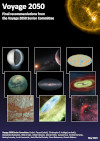
Last updated: 25 March 2024
To be informed about new Announcements or Calls from the ESA Science Directorate please subscribe to the dsciannounce mailing list .
- Skip to main content
- Keyboard shortcuts for audio player
3 predictions for the future of space exploration — including your own trips

Alejandra Marquez Janse

Mary Louise Kelly
Tinbete Ermyas

Peggy Whitson says more widely available space tourism is realistic. Axiom Space hide caption
Peggy Whitson says more widely available space tourism is realistic.
If you've ever traveled somewhere that left you so enthralled that you wanted to go back over and over, then you get how Peggy Whitson feels about space.
She is a seasoned astronaut who has multiple achievements under her belt: She was the first woman to command the International Space Station, and in 2017 broke the record for most cumulative days in space of any American and female astronaut, with a count of 665.
Whitson retired from NASA nearly five years ago, but last month, at age 63, she packed up the necklace she wore on her wedding day, zipped her spacesuit one more time, and took flight in a SpaceX capsule as commander of the Ax-2 mission. It was sponsored by a private company, Axiom Space, where she now works as the director of human spaceflight. Three paying crew members traveled with her.
After returning to Earth, Whitson spoke with All Things Considered host Mary Louise Kelly and shared a few thoughts about the future of space exploration.
This interview has been edited slightly for clarity and brevity.

The Ax-2 crew in a training session. The group, composed of Whitson (far left) and three paying costumers, spent nine days in space last month. Axiom Space hide caption
The Ax-2 crew in a training session. The group, composed of Whitson (far left) and three paying costumers, spent nine days in space last month.
1. Space exploration will be a mix of public and private money
If you look at even the NASA missions returning to the moon, lots of different private space companies are involved in that process. And that includes Axiom Space, for instance, who are building the spacesuits that will be used by the NASA astronauts as they step on the moon again. So it's exciting to be part of this changing philosophy of space and the efforts of commercial companies like Axiom Space. We intend to build the first commercial space station initially attached to the International Space Station, but to undock before the space station is decommissioned.
I think it's a worldwide relationship between different companies and peoples, and that's what makes it such a special time to be a part of the [Ax-2] mission, because [space exploration] is changing flavor and it's exciting because there are going to be many more opportunities in the future.

The Ax-2 crew returns to Earth. Could this be you one day? Axiom Space hide caption
2. More people will be able to go to space
Obviously some of it will take time to make it not cost-prohibitive, but the fact that we are taking those initial steps is really important now. If you look back at commercial aviation and how that occurred and the development of that process, you know, it also started off to be only a few people could be involved and then later more and more, and so now it's pretty commonplace. I like to think that we're doing some of the same steps in commercial spaceflight now.
3. The goals depend on the person — and the country — that's traveling
Well, the objective of the mission is slightly different, obviously. My personal roles and responsibilities of taking care of the crew and ensuring their safety obviously are very similar. But our objectives were, we had one private astronaut, John Shoffner, who was trying to develop science, technology, engineering and math (STEM) outreach products for educators in the future, as well as doing research. And then we had two government sponsored astronauts from Saudi Arabia – the first female Saudi Arabian to fly in space and go to the International Space Station – and the second male to arrive.
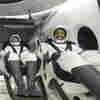
SpaceX mission returns from space station with ex-NASA astronaut, 3 paying customers
So the objectives of the crew weren't all that much different necessarily than a NASA mission, which is outreach and scientific investigations, but these were with the specific goals of expanding outreach in specific areas for Saudi – which hadn't had a person in space for 40 years – and, you know, to inspire their youth as well as inspiring the youth in the United States.
share this!
June 11, 2021
Voyage 2050 sets sail: ESA chooses future science mission themes
by European Space Agency
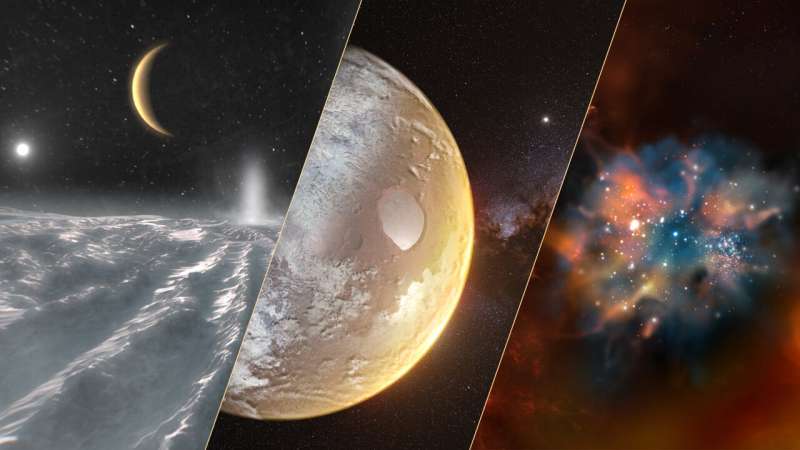
ESA's large-class science missions for the timeframe 2035-2050 will focus on moons of the giant Solar System planets, temperate exoplanets or the galactic ecosystem, and new physical probes of the early universe.
"The selection of the Voyage 2050 themes is a pivotal moment for ESA's science program, and for the future generation of space scientists and engineers," says Günther Hasinger, ESA Director of Science.
"Now that Cosmic Vision has taken shape with a clear plan for our missions until the mid 2030s, we must start planning the science and the technology we'll need for the missions we want to launch decades from now, and that is why we are defining the top-level science themes of the Voyage 2050 plan today."
A call for ideas for Voyage 2050 was issued in March 2019, generating close to 100 diverse and ambitious ideas, which were subsequently distilled into a number of science themes. Topical teams, comprising many early career through early scientists from a broad range of space science expertise areas, carried out an initial assessment of the themes and reported their findings to a senior science committee. This committee was tasked by the Director to recommend not only science themes for the next three large-class missions following the Jupiter Icy Moons Explorer, Athena and LISA, but also to identify potential themes for future medium-class missions, and recommend areas for long-term technology development beyond the scope of Voyage 2050. The science themes were selected by ESA's Science Program Committee at a meeting on 10 June 2021. The specific missions themselves will be selected in due course when ESA issues individual calls for mission proposals.
"The Voyage 2050 plan is the result of a significant effort of the science community, of the topical teams, and of the senior committee who contributed to such a lively and productive debate to arrive at this outstanding proposal," says Fabio Favata, Head of the Strategy, Planning and Coordination Office. "Voyage 2050 is setting sail, and will keep Europe at the forefront of space science for decades to come."
Mission themes
The top three priorities for future large-class missions are identified as:
Moons of the giant planets
Investigating the habitability potential of worlds in our Solar System is essential for understanding the emergence of life, and is of particular relevance in the search for Earth-like planets beyond our Solar System. Building on the legacy of the international Cassini-Huygens mission to Saturn and ESA's upcoming Jupiter Icy Moons Explorer, a future outer Solar System mission with advanced instrumentation would focus on the study of the connection of ocean-bearing moon interiors with their near-surface environments, also attempting to search for possible biosignatures. The mission profile might include an in-situ unit, such as a lander or a drone.
From temperate exoplanets to the Milky Way
Our Milky Way contains hundreds of millions of stars and planets along with dark matter and interstellar matter but our understanding of this ecosystem, a stepping-stone for understanding the workings of galaxies in general, is limited. A detailed understanding of our Galaxy's formation history, including its "hidden regions," is key to our understanding of galaxies in general. At the same time, the characterisation of temperate exoplanets in the mid-infrared, through a first spectrum of direct thermal emission from exoplanet atmospheres to better understand if they harbor truly habitable surface conditions, would be an outstanding breakthrough.
While the exoplanet topic is considered to have a high scientific priority, solidifying Europe's leadership in the field of exoplanets beyond the lifetime of Cheops, Plato and Ariel, an informed choice between a study of the less accessible regions of our Galaxy and the study of temperate exoplanets needs to be made involving the interested scientific community to assess the likelihood of success and feasibility of missions within the large mission boundary conditions.
New physical probes of the early universe
How did the universe begin? How did the first cosmic structures and black holes form and evolve? These are outstanding questions in fundamental physics and astrophysics that could be addressed by missions exploiting new physical probes, such as detecting gravitational waves with high precision or in a new spectral window, or by high-precision spectroscopy of the cosmic microwave background—the relic radiation left over from the Big Bang. This theme follows the breakthrough science from Planckand the expected scientific return from LISA, and would leverage advances made in instrumentation to open a huge discovery space. Additional study and interaction with the scientific community will be needed to converge on a mission addressing this theme.
A bright future for medium-class missions
Medium-class missions are a key component of ESA's Science Program and enable Europe to conduct stand-alone missions that answer important scientific questions with relatively modest cost envelopes. Venus Express, Mars Express and the upcoming Euclid, Plato, and Ariel missions are examples of ESA's past, current and future medium-class missions.
The Voyage 2050 committee identified themes across all domains of space science, from solar system science to astrometry, astronomy, astrophysics and fundamental physics, showing that breakthrough science can continue to be achieved within the medium-class mission cost-cap. Medium missions will continue to be selected through future open "Calls for missions."
Medium-class missions also provide a route for Europe's participation in ambitious missions with international partners. This could include contributing to NASA's next-generation astronomy observatories—much like the current James Webb Space Telescope partnership—or to future outer Solar System missions, for example.
Technology development for the next century
In discussing the possible large mission themes, the Voyage 2050 committee identified several areas where the science return would be outstanding but the technology would not reach maturity by the timeframe of Voyage 2050. The committee therefore recommended investment in a number of technologies so that these themes could become a reality in the second half of this century. This covers topics such as cold atom interferometry for atomic clock development, enabling X-ray interferometry for the future study of compact objects like black holes, and developments for future planetary missions: in particular better power sources to enable the exploration of the outer Solar System, and advances in collecting and storing cryogenic samples of cometary ices for a future sample return mission.
Why plan now?
Long-term planning is essential to ensure success in future space science endeavors. Cosmic Vision 2015-2025 is the current planning cycle for ESA's space science missions. It was created in 2005, and is predated by the Horizon 2000 plan prepared in 1984, and Horizon 2000 Plus, which was drawn up in 1994–95. To put these plans in context, comet-chasing Rosetta and its lander Philae, and 'time-machine' Planck and astronomy observatory Herschel all began life in Horizon 2000. Gaia, Lisa Pathfinder and BepiColombo were all conceived in Horizon 2000 Plus. Cosmic Vision missions are just being realized today: the exoplanet mission Cheops launched in 2019, and Solar Orbiter in 2020. Jupiter Icy Moons Explorer, Athena and LISA are all large-class missions in the Cosmic Vision plan. Large missions in particular require significant technology development, which often takes a number of years. Therefore, it is important to start defining the necessary technology well in advance, to ensure that ESA's Science Program can secure a world-class, forward-looking series of missions for future generations.
Thus, it is time to look beyond Cosmic Vision, to the period 2035-2050—and even beyond—with the Voyage 2050 plan.
Provided by European Space Agency
Explore further
Feedback to editors

Fluorescent nanomaterial could transform how we visualize fingerprints
4 minutes ago

Experimental data help unravel the mystery surrounding the creation of heavy elements in stars
12 minutes ago

Discovery about ice layer formation in ice sheets can improve sea level rise predictions

Researchers solve long-standing mystery of alumina surface structure

Microbe dietary preferences found to influence effectiveness of carbon sequestration in deep ocean

Rapid loss of Antarctic ice after 2100 likely under current emissions, climate scientists find


Smart supramolecular assemblies: Researchers show how additives promote self-assembly of spherical microparticles

Study reveals food waste bans ineffective in reducing landfill waste, except in Massachusetts

Climate change-triggered landslide unleashes a 650-foot mega-tsunami

New research reveals how El Niño caused the greatest ever mass extinction
Relevant physicsforums posts, exploring the sun: amateur solar imaging techniques.
Sep 10, 2024
Solar Activity and Space Weather Update thread
Sep 8, 2024
Our Beautiful Universe - Photos and Videos
Sep 7, 2024
Looking for information about spectroscopy isotopes and stellar formation
Sep 5, 2024
The James Webb Space Telescope
Rotation curve of a gas disk in an elliptical galaxy.
Sep 2, 2024
More from Astronomy and Astrophysics
Related Stories

Venus hotter than ever: 3rd new robotic explorer on horizon
Jun 10, 2021

NASA picks Venus as hot spot for two new robotic missions
Jun 3, 2021

Athena to study the hot and energetic universe
Jun 30, 2014

Three candidates for ESA's next medium-class science mission
Jun 4, 2015

NASA extends exploration for two planetary science missions
Jan 11, 2021

Exoplanet and cosmology discoveries awarded Nobel Prize in Physics
Oct 9, 2019
Recommended for you

Tech billionaire pulls off first private spacewalk high above Earth
7 hours ago

Voyager 1 team accomplishes tricky thruster swap
Sep 11, 2024

Keeping mold out of future space stations

SpaceX launches billionaire to conduct the first private spacewalk

SpaceX launches all-civilian crew for first private spacewalk

Two astronauts are left behind in space as Boeing's troubled capsule returns to Earth empty
Let us know if there is a problem with our content.
Use this form if you have come across a typo, inaccuracy or would like to send an edit request for the content on this page. For general inquiries, please use our contact form . For general feedback, use the public comments section below (please adhere to guidelines ).
Please select the most appropriate category to facilitate processing of your request
Thank you for taking time to provide your feedback to the editors.
Your feedback is important to us. However, we do not guarantee individual replies due to the high volume of messages.
E-mail the story
Your email address is used only to let the recipient know who sent the email. Neither your address nor the recipient's address will be used for any other purpose. The information you enter will appear in your e-mail message and is not retained by Phys.org in any form.
Newsletter sign up
Get weekly and/or daily updates delivered to your inbox. You can unsubscribe at any time and we'll never share your details to third parties.
More information Privacy policy
Donate and enjoy an ad-free experience
We keep our content available to everyone. Consider supporting Science X's mission by getting a premium account.
E-mail newsletter
Covering the business and politics of space
AI, quantum and nuclear technologies are key to Lockheed Martin’s vision for Space 2050
- Click to share on X (Opens in new window)
- Click to share on Facebook (Opens in new window)
- Click to share on LinkedIn (Opens in new window)
- Click to share on Reddit (Opens in new window)
- Click to email a link to a friend (Opens in new window)
- Click to share on Clipboard (Opens in new window)

By clicking submit, you agree to share your email address with the site owner to receive the newsletters. You can opt-out at any time.
Data gathered by hundreds or thousands of satellites traveling in different orbits could provide a “vast amount of information which would be beyond the ability of any number of human operators to parse through,” Roy said. “The goal is to use AI to determine truly optimal and trusted decisions from that raw data,” which may not be intuituve.
Quantum Computing
Nuclear power, crew habitats and mobility, lunar commercial opportunities, miriam klaczynska.
Miriam Klaczynska is an undergraduate student at the University of California, Berkeley, pursuing a degree in the history of science, with a focus on aerospace technology. She is minoring in journalism and serves as the deputy opinion editor at Berkeley’s... More by Miriam Klaczynska

Sign up for a SpaceNews newsletter
Get top stories, military space news and more delivered to your inbox.
The view to 2030
“if you don’t think you’re going fast enough, you’re not”, more on the future of space.
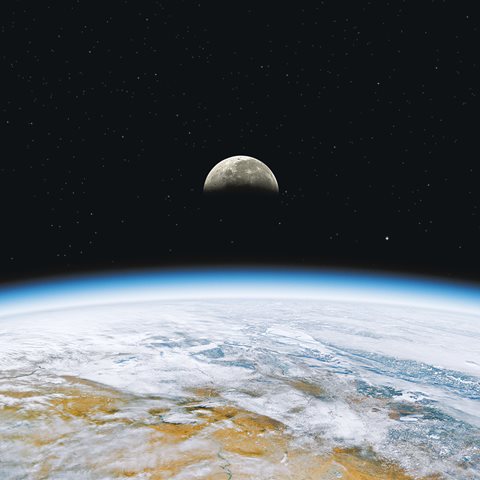
Space: Investment shifts from GEO to LEO and now beyond
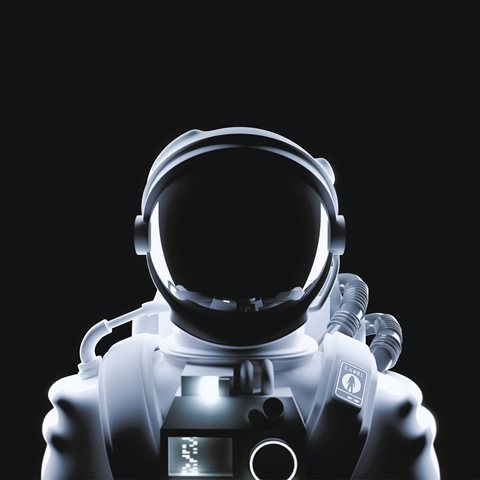
R&D for space: Who is actually funding it?
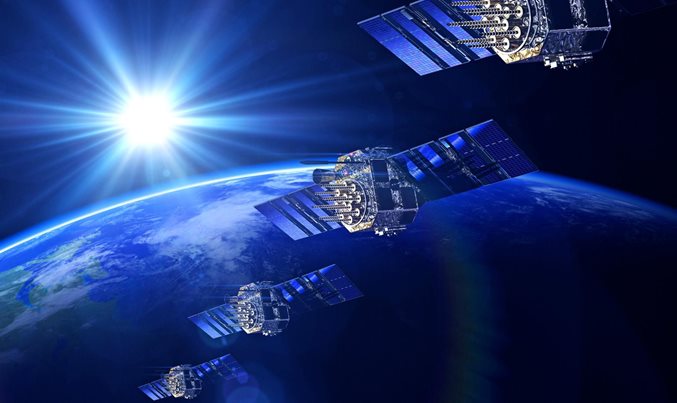
Expectations versus reality: Commercial-satellite constellations

Look out below: What will happen to the space debris in orbit?
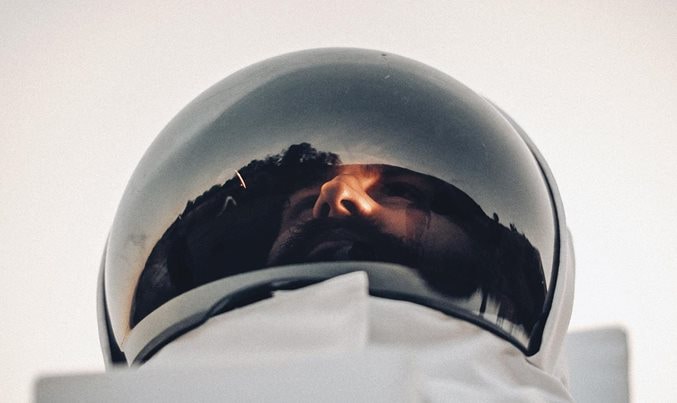
Wall Street to Mission Control: Can space tourism pay off?

Large LEO satellite constellations: Will it be different this time?
The next normal explores the future of grocery, college, video entertainment, and more., latest editions of the next normal, the future of biotech: ai-driven drug discovery, could this be a glimpse into life in the 2030s, the future of video entertainment: immersive, gamified, and diverse.

Universe Today
Space and astronomy news
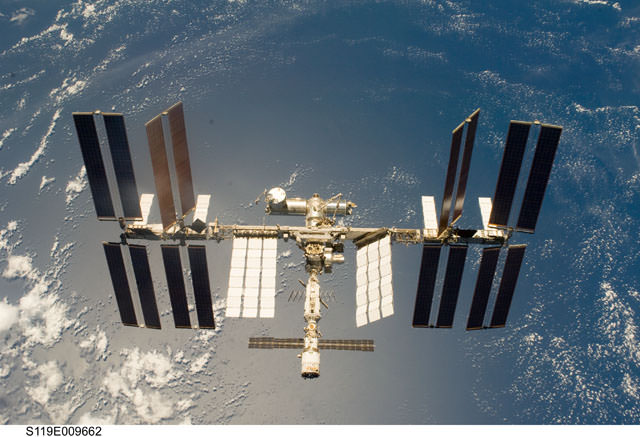
Extend ISS to 2050 as Stepping Stone to Future Deep Space Voyages – Orbital VP/Astronaut tells Universe Today
The International Space Station could potentially function far beyond its new extension to 2024. Perhaps out to 2050. The ISS as seen from the crew of STS-119. Credit: NASA Story updated[/caption]
WALLOPS ISLAND, VA – Just days ago, the Obama Administration approved NASA’s request to extend the lifetime of the International Space Station (ISS) to at least 2024. Ultimately this will serve as a stepping stone to exciting deep space voyages in future decades.
“I think this is a tremendous announcement for us here in the space station world,” said Bill Gerstenmaier, associate administrator for NASA’s Human Exploration and Operations Mission Directorate, at a press briefing on Jan. 8.
But there’s really “no reason to stop it there”, said Frank Culbertson, VP at Orbital Sciences and former NASA astronaut and shuttle commander, to Universe Today when I asked him for his response to NASA’s station extension announcement.
“It’s fantastic!” Culbertson told me, shortly after we witnessed the picture perfect blastoff of Orbital’s Antares/Cygnus rocket on Jan. 9 from NASA’s Wallops launch facility in Virginia, bound for the ISS.
“In my opinion, if it were up to me, we would fly it [the station] to 2050!” Culbertson added with a smile. “Of course, Congress would have to agree to that.”
Gerstenmaier emphasized that the extension will allow both the research and business communities to plan for the longer term and future utilization, be innovative and realize a much greater return on their investments in scientific research and capital outlays.
“The station is really our stepping stone,” Robert Lightfoot, NASA Associate Administrator, told me at Wallops following Antares launch.
The Alpha Magnetic Spectrometer (AMS) – which is searching for elusive dark matter – was one of the key science experiments that Gerstenmaier cited as benefitting greatly from the ISS extension to 2024. The AMS is the largest research instrument on the ISS.
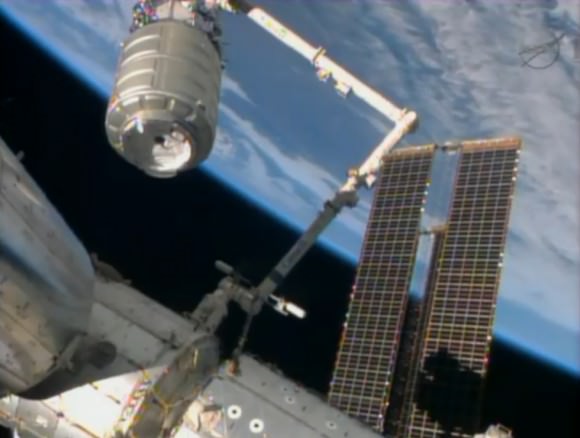
The extension will enable NASA, the academic community and commercial industry to plan much farther in the future and consider ideas not even possible if the station was de-orbited in 2020 according to the existing timetable.
Both the Antares rocket and Cygnus cargo freighter are private space vehicles developed and built by Orbital Sciences with seed money from NASA in a public-private partnership to keep the station stocked with essential supplies and research experiments and to foster commercial spaceflight.
So I asked Culbertson and Lightfoot to elaborate on the benefits of the ISS extension to NASA, scientific researchers and commercial company’s like Orbital Sciences.
“First I think it’s fantastic that the Administration has committed to extending the station, said Culbertson. “They have to work with the ISS partners and there is a lot to be done yet. It’s a move in the right direction.”
“There is really no reason to stop operations on the space station until it is completely no longer usable. And I think it will be usable for a very long time because it is very built and very well maintained.”
“If it were up to me, we would fly it to 2050!”
“NASA and the engineers understand the station very well. I think they are operating it superbly.”
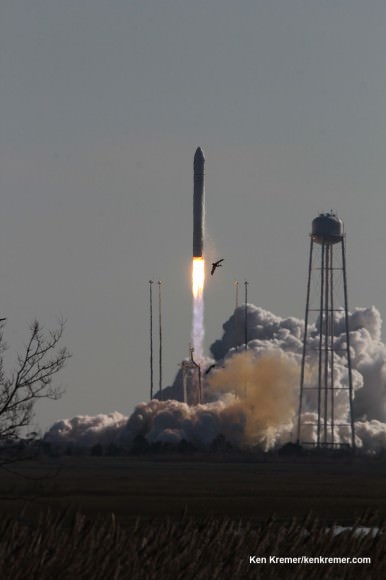
“The best thing about the station is it’s now a research center. And it is really starting to ramp up. It’s not there yet. But it is now finished [the assembly] as a station and a laboratory.”
“The research capability is just starting to move in the right direction.”
The Cygnus Orbital 1 cargo vehicle launched on Jan. 9 was loaded with approximately 2,780 pounds/1,261 kilograms of cargo for the ISS crew for NASA including vital science experiments, computer supplies, spacewalk tools, food, water, clothing and experimental hardware.
The research investigations alone accounted for over 1/3 of the total cargo mass. It included a batch of 23 student designed experiments representing over 8700 students sponsored by the National Center for Earth and Space Science Education (NCESSE).
“So extending it [ISS] gives not only commercial companies but also researchers the idea that ‘Yes I can do long term research on the station because it will be there for another 10 years. And I can get some significant data.”
“I think that’s really important for them [the researchers] to understand, that it will be backed for that long time and that they won’t be cut off short in the middle of preparing an experiment or flying it.”
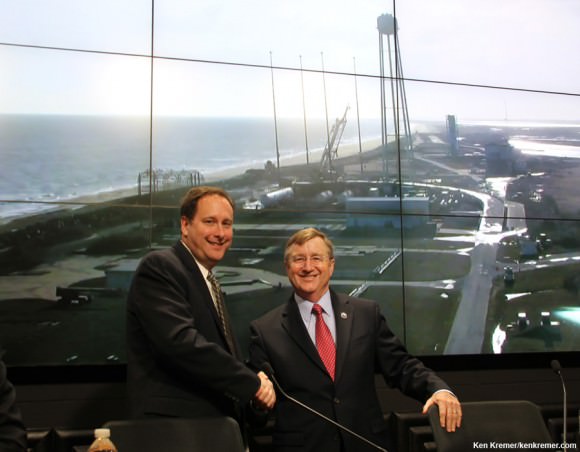
“So I think that first of all it demonstrates the commitment of the government to continue with NASA. But also it presents a number of opportunities for a number of people.”
What does the ISS extension mean for Orbital?
The purpose for NASA and Orbital Sciences in building Antares and Cygnus was to restore America’s ability to launch cargo to the ISS – following the shutdown of NASA’s space shuttles – by using commercial companies and their business know how to thereby significantly reduce the cost of launching cargo to low Earth orbit.
“As far as what it [the ISS extension] means for Orbital and other commercial companies – Yes, it does allow us to plan long term for what we might be able to do in providing a service for NASA in the future,” Culbertson replied.
“It also gives us the chance to be innovative and maybe invest in some improvements in how we can do this [cargo service] – to make it more cost effective, more efficient, turnaround time quicker, go more often, go a lot more often!”
“So it allows us the chance to think long term and make sure we can get a return on our investment.”
What does the ISS extension mean for NASA?
“The station is really our stepping stone,” Robert Lightfoot, NASA Associate Administrator, told Universe Today. “If you use that analogy of stepping stones and the next stone. We need to use this stone to know what the next stone looks like. So we can get ready. Whether that’s research or whether that things about the human body. You don’t want to jump off that platform before you are ready.”
“We are learning every day how to live and operate in space. Fortunately on the ISS we are close to home. So if something comes up we can get [the astronauts] home.”
The ISS extension is also the pathway to future exciting journey’s beyond Earth and into deep space , Culbertson and Lightfoot told Universe Today.
“It actually also presents a business opportunity that can be expanded not just to the station but to other uses in spaceflight, such as exploration to Asteroids, Mars and wherever we are going,” said Culbertson.
And we hope it will extend to other civilian uses in space also. Maybe other stations in space will follow this one and we’ll be able to participate in that.”
Lightfoot described the benefits for astronaut crews.
“The further out we go, the more we need to know about how to operate in space, what kind of protection we need, what kind of research we need for the astronauts,” said Lightfoot.
“Orbital is putting systems up there that allow us to test more and more. Get more time. Because when we get further away, we can’t get home as quick. So those are the kinds of things we can do.
“So with this extension I can make those investments as an Agency. And not just us, but also our academic research partners, our industry partners, and the launch market too is part of this.”
He emphasized the benefits for students, like those who flew experiments on Cygnus, and how that would inspire the next generation of explorers!
“You saw the excitement we had today with the students at the viewing area. For example with those little cubesats, 4 inches by 4 inches, that they worked on, and got launched today!”
“That’s pretty cool! And that’s exactly what we need to be doing!
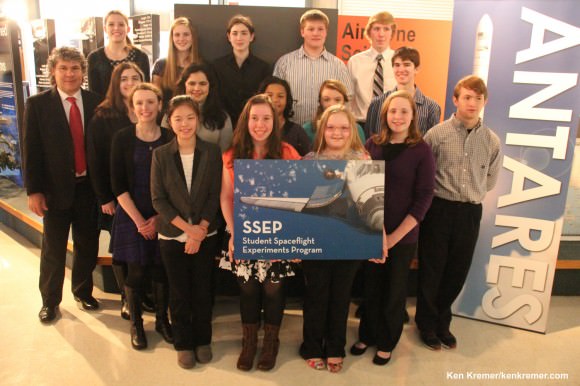
“So eventually they can take our jobs. And as long as they know that station will be there for awhile, the extension gives them the chance to get the training and learning and do the research we need to take people further out in space.”
“The station is the stepping stone.”
“And it really is important to have this station extension,” Lightfoot explained to me.
The Jan. 9 launch of the Orbital-1 mission is the first of eight operational Antares/Cygnus flights to the space station scheduled through 2016 by Orbital Sciences under its $1.9 Billion Commercial Resupply Services (CRS) contract with NASA to deliver 20,000 kg of cargo to orbit.
Orbital Sciences and SpaceX – NASA’s other cargo provider – will compete for follow on ISS cargo delivery contracts.
The next Antares/Cygnus flight is slated for about May 1 from NASA Wallops.
In an upcoming story, I’ll describe Orbital Sciences’ plans to upgrade both Antares and Cygnus to meet the challenges of the ISS today and tomorrow.
Stay tuned here for Ken’s continuing Orbital Sciences, SpaceX, commercial space, Chang’e-3, LADEE, Mars and more news.

Share this:
- Click to share on Facebook (Opens in new window)
- Click to share on Twitter (Opens in new window)
- Click to share on Reddit (Opens in new window)
14 Replies to “Extend ISS to 2050 as Stepping Stone to Future Deep Space Voyages – Orbital VP/Astronaut tells Universe Today”
Extending the ISS lifetime to 2050, with approval of the ISS partners, isn’t necessarily advantageous for Orbital Sciences Corp.
Orbital have only 23 or so modified NK33 engines – re-badged and slightly modified in the US as the Aerojet A26 – for use with the Antares LV.
As Antares isn’t on a path to become a re-usable LV and NK33’s are out of production, Antares in it’s current form is no more than 11 flights away from being retired.
Orbital are pursuing a $1.5B antitrust lawsuit against UAL to try and free up 20 RD-180 engines for use after mid-2016 but, the outcome is far from certain.
http://www.bizjournals.com/denver/news/2013/06/26/ula-faces-15-billion-anti-trust.html
If judgement goes against Orbital and they drop out of Commercial Re-Supply, then the strategies of manufacturing your own rocket engines and moving toward re-usable LVs – as pursued by SpaceX – will become a lesson for Orbital.
I have asked Orbital specifically all these questions and many more. future story
What a horrible vision, to “prepare” for a Mars trip until 2050, to land there in the 2060s then! We should instead start going to Mars today! The ISS is a lousy preparation for manned deep space since it is in microgravity. A Mars mission must necessarily use artificial centrifugal gravity for health and cost reasons. Life support and other systems in the ISS must be redesigned from scratch, they are now most expensively specialized for microgravity.
A new spacestation similar to a real Mars spacecraft should be sent to LEO with 0.38G, closed loop life support and a crew of 4 for 6 months with all supply from the start. There they should simulate autonomy from Earth with delayed communication and no supplies unless emergency. That would be a stepping stone to deep space travel! The ISS has nothing to do with space travel, it never goes anywhere, but it has already cost more than what a manned mission to Mars would’ve cost! No NASA astronaut has been beyond 1/10 of an Earth radius over ground for over 40 years now. Time to move on.
Certainly a dedicated project would speed up Mars missions, but that isn’t going to happen for budget reasons. Which is why a prolonged ISS life is a fallback option. However, I don’t see a notion in the article that Mars missions would be pushed back to 2050.
As for ISS suitability as a preparation site, it seems good.
– No current Mars mission concept is entertaining the idea of artificial “centrifugal” gravity, probably exactly because of cost reasons (and to cut development time). This is why the upcoming yearlong ISS habitation of US astronauts, including a twin with an Earth control, is said to be exciting and essential preparations for a future Mars mission.
– And the NASA deep space concepts seems all centered around the notion to use standard ISS modules, with known micro-asteroid protection and life support capabilities, as living spaces in both crafts and putative way stations. Look them up.
“Preparing” for deep space until 2050 implies a delay. Bush1, Bush2 and Obama proposed going to Mars, Moon and an asteroid. It has all been canceled because NASA wanted to do something else “to prepare”. Like now proposing to tow that ridiculous meteoroid to Moon orbit instead of sending a manned mission to a deep space asteroid. It’s not a budget issue, the ISS has cost more than a manned Mars mission would’ve cost. The issue is that NASA has developed a culture of being afraid of space travel!
Centrifugal gravity is simple physics. You rotate two masses which are attached by a long cable. Microgravity on the other hand is expensive engineering and complex medicin, all without any possible spinoff value to Earth or Mars conditions which don’t suffer from microgravity. Everything from toilets to ventilation is designed much differently in microgravity. Inspite of 2½ hours exercising a day, very expensive working hours on heavy expensive microgravity exercising equipment while consuming more calories and water and spreading sweat all over the place, health effects of microgravity are still devastating! We can’t send explorers to Mars who can’t walk, who have eye and skin problems.
Micrometeorites? Staying in LEO with all the space debris is another problem which real space travel doesn’t have. The ISS has nothing to do with space travel, it is in no way designed as a stepping stone towards that goal.
you have completely misunderstood the entire point
It would be interesting to know what happened with the projections of ISS module life, since IIRC those where what set the initial estimates of affordable use.
What would happen if an ISS module fails?
It would depend on what module failed and the type of failure that occured
This is very good news. Most of the arguments here seem to be base camp/no base camp for a Mars expedition. The huge resources needed for such a long non-stop journey require a leviathan lifter and that’s not coming in a hurry – if at all.
If SpaceX et al. can ship stuff up a bit at a time in cheap launchers then we need to get experience of in-orbit assembly. A Bigelow style pressurized unit attached to the ISS would be more feasible than doing it in spacewalks. Micro-g 3D printing and manufacturing also need to be explored. If something valuable can be constructed only in micro-g then that would also provide a revenue stream to keep the whole thing progressing.
The ISS can also be used to trial the VASIMR drive to maintain its orbit and if we need anything fission powered out there then shipping up nuclear fuel small quantities at a time will solve the launch safety boycott.
this is a good post!
Eight girls and four boys. I guess the boys just bypasses a political party like NASA and goes straight to Space-X and others to do real space work.
Oh goody, another 35 years of boldly going nowhere. Bring back the Right Stuff!
One of the original selling points of the station, then known as “Freedom,” was as a “stepping-stone” to interplanetary voyages. That was in the 1980s. It wasn’t true then, it isn’t true now and it isn’t likely to be true any time in the next proposed 36 years either. It has been, if anything, an impediment.
I totally agree. If you want to go somewhere, you should go. As long as Nasa is constituency driven, it’s in their interest to string any particular (non-deep space) project out as long as possible. I’m putting my hopes to actually do something new with the Chinese or people like Elon Musk. It’s really sad for a proud space nation such as the US to let manned spaceflight slide so.
Comments are closed.
- Space Summit 2023
- Ministerial Meeting 2022
- Accelerators
- Revolution Space
- ESA–EU relations
- Commercialisation
- Space for Safety and Security
- Programme challenges
- ESA transformation
- Privacy notice
Large-class Science Missions – Voyage 2050
The themes for ESA’s large-class science missions for the timeframe 2035-2050 were announced in June 2021. Future missions will address fundamental questions about our Solar System and the origins of the Universe. Read all about these themes and how they will become missions.
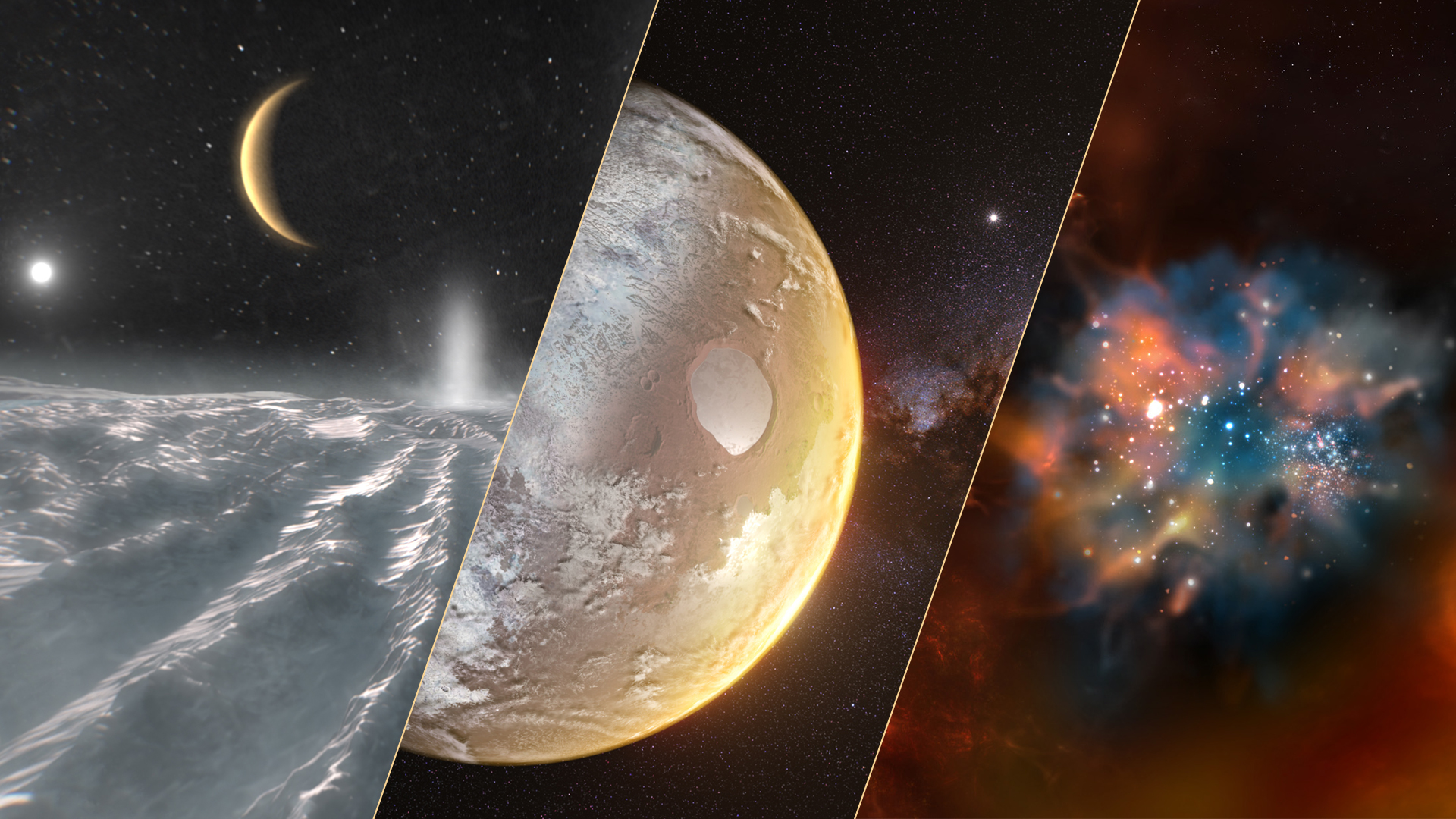
The themes for ESA’s large-class science missions for the timeframe 2035-2050 were announced in June 2021. Future missions will address fundamental questions about our Solar System and the origins of the Universe.
Read all about these themes and how they will become missions.
The Future of Space Travel in 2050: A New Frontier of Innovation and Exploration
As we look towards the year 2050, space travel has transcended the realm of science fiction and become an integral part of human life. The illustration before us paints a vivid picture of the advancements and the transformative impact of space tourism on various fields. The sleek spacecraft, tourists experiencing zero gravity, and the backdrop of Earth, the Moon, and Mars symbolize the new era of exploration and innovation.
In 2050, space tourism is no longer an exclusive endeavor for the elite. The development of advanced propulsion systems and cost-effective technologies has made space travel accessible to a broader audience. Sleek spacecraft equipped with cutting-edge technology ensure a safe and thrilling experience for tourists. The zero-gravity environment, once a novelty, is now a commonplace adventure for those seeking an extraordinary escape from Earth.
The illustration showcases a host of futuristic technologies that have emerged from the demands of space travel. Advanced spacesuits with innovative textiles provide enhanced protection and comfort for astronauts and tourists alike. These suits are designed to withstand the harsh conditions of space while incorporating smart materials that adapt to the wearer's needs.
Medical equipment for space health studies has seen significant advancements. In the microgravity environment, researchers are uncovering new insights into human physiology, leading to breakthroughs in medical treatments and preventive care. These innovations have profound implications not only for space travelers but also for healthcare on Earth.
Space travel necessitates specialized food packages that cater to the unique requirements of astronauts and tourists. The development of nutritious, long-lasting, and palatable food options has revolutionized how we think about sustenance in space. These advancements have also influenced food technology on Earth, leading to the creation of more sustainable and efficient food production methods.
The illustration highlights eco-friendly technologies inspired by space exploration. The need for sustainable living in space has driven the development of closed-loop systems that recycle air, water, and waste. These systems are being adapted for use on Earth, promoting environmental sustainability and resource conservation.
By 2050, human presence on the Moon and Mars is a reality. The Moon serves as a gateway for deeper space exploration, with lunar bases supporting scientific research and resource extraction. Mars, the next frontier, is home to pioneering colonies that are pushing the boundaries of human ingenuity and adaptability. The vibrant colors of Earth, the Moon, and Mars in the illustration symbolize the interconnectedness of our expanding horizons.
The impact of space tourism extends beyond technological and scientific advancements. It fosters a sense of global unity and perspective, as people from diverse backgrounds come together to explore the cosmos. The shared experience of viewing Earth from space underscores the fragility and beauty of our planet, inspiring greater efforts towards its preservation.
The future of space travel in 2050 is bright, dynamic, and filled with a sense of wonder and innovation. As we continue to explore the cosmos, we unlock new possibilities and drive advancements that benefit all of humanity. The panoramic illustration serves as a testament to our collective ambition and the boundless potential of space tourism. With each journey beyond our planet, we move closer to a future where the stars are within reach, and the spirit of exploration knows no bounds.
Loits World: Embarking on the Quantum Frontier – The Next Evolution of Human Potential
Germany's quantum leap: the qsolid project and the future of superconducting quantum computers, topological excitons: a new frontier in quantum materials and technology.

IMAGES
VIDEO
COMMENTS
By 2050, commercial space travel, space tourism, orbital space stations, and lunar habitats are likely to become a reality. And that's not all. Published: May 27, 2021 12:23 PM EST.
By the year 2050, humans will have established a permanent presence on the Moon and a research base on Mars, while space travel will become a regular occurrence for many people. And the climate crisis could be partly addressed by the use of enormous solar shades in space that could help to protect us from the worst warming effects of the sun ...
Spaceflight and exploration have changed tremendously over the past 25 years. Since 1999, we've seen the birth of a vibrant private spaceflight sector, led by Elon Musk's SpaceX, and the rise of ...
Space, 2050: There are mining colonies on the moon and tourist resorts floating in Earth's orbit. People play sports in space, generate power in space, even grow expensive, trendy coffee beans in space. That's not entirely science fiction. Researchers at RAND Europe looked at how trends in more than a dozen economic sectors could play out in ...
Technology. When NASA was created 60 years ago, it had to invent the technology to get where we needed to go, and we will continue to push the boundaries of technology into the future. New emerging technologies that open opportunities for research and exploration with minimal investments include NASA's small satellites.
The Voyage 2050 committee identified themes across all domains of space science, from solar system science to astrometry, astronomy, astrophysics and fundamental physics, showing that breakthrough science can continue to be achieved within the medium-class mission cost-cap. Medium missions will continue to be selected through future open 'Calls ...
11 June 2021. Voyage 2050 sets sail: ESA chooses future science mission themes. ESA's large-class science missions for the timeframe 2035-2050 will focus on moons of the giant Solar System planets, temperate exoplanets or the galactic ecosystem, and new physical probes of the early Universe. [Read the press release here]
Looking ahead to 2050. Activities in space have rapidly evolved compared to the first 50 years of exploration, said Martinez. With diverse actors, the kind of events taking place now did not exist a decade ago. Activities like servicing and refuelling [satellites] while in orbit will be foundational in the development of the space economy, he ...
The future of space exploration: How astronomy, space travel and the search for life may change by 2049 (video) News. By Samantha Mathewson. published 20 July 2024.
What might space missions in 2050 and beyond set out to discover? One small NASA program aims to see what could be possible. The NASA Innovative Advanced Concepts (NIAC) program, part of the agency's Space Technology Mission Directorate, funds early-stage research into sci-fi sounding, futuristic technology concepts. ...
Voyage 2050 Long-term planning of the ESA Science Programme . Updates on Voyage 2050 . 25 March 2024. The report from the Expert Committee for the Large-class mission in ESA's Voyage 2050 plan covering the science theme "Moons of the Giant Planets" is published today. The report can be downloaded here.See also the news article Saturn's moon Enceladus top target for ESA.
Axiom Space. 1. Space exploration will be a mix of public and private money. If you look at even the NASA missions returning to the moon, lots of different private space companies are involved in ...
Photo by NASA on Unsplash 10 Mind-Blowing Space Travel and Exploration Trends of 2050. The year 2050 promises to be an exciting time for space travel and exploration, with ground-breaking ...
The Voyage 2050 committee identified themes across all domains of space science, from solar system science to astrometry, astronomy, astrophysics and fundamental physics, showing that breakthrough ...
Through a project called Destination: Space 2050, Lockheed Martin executives are exploring, for example, how AI could assist scientific exploration of locations where communications with remote ...
Rocket launches have become much less expensive, so thousands more satellites—and many more people than ever before—can venture into orbit. But more objects in space also mean more space debris and higher risks of collisions. In this edition of The Next Normal, McKinsey experts and industry executives envision the space industry's next ...
The future of space exploration involves both telescopic and physical explorations of space by robotic spacecraft and human spaceflight.Near-term physical exploration missions, focused on obtaining new information about the Solar System, are planned and announced by both national and private organisations.. Tentative plans for crewed orbital and landing missions to the Moon and Mars to ...
The International Space Station could potentially function far beyond its new extension to 2024. Perhaps out to 2050. The ISS as seen from the crew of STS-119.
Embark on a journey to the future with Space Travel 2050. Explore the futuristic spaceships and the vast openness of the cosmos. Discover the advancements in...
Large-class Science Missions - Voyage 2050. The themes for ESA's large-class science missions for the timeframe 2035-2050 were announced in June 2021. Future missions will address fundamental questions about our Solar System and the origins of the Universe. Read all about these themes and how they will become missions.
Future downstream markets could encompass a variety of space, hybrid and terrestrial activities and end users. Researchers identified around 200 potential use cases and organised these into 15 clusters, comprising: Various socio-technological enablers and barriers could affect the evolution of upstream and downstream markets up to 2050.
Cosmic Vision 2015-2025 is the current planning cycle for ESA's space science missions. It was created in 2005, and is predated by the Horizon 2000 plan prepared in 1984, and Horizon 2000 Plus, which was drawn up in 1994-95. To put these plans in context, comet-chasing Rosetta and its lander Philae, and 'time-machine' Planck and ...
The research explored how the way we use space will change, who the key space actors will be, and how well-placed the UK is to address these future trends in the space economy. The research found that the development of new space markets and use cases out to 2050 may render the space sector increasingly inseparable from the wider economy.
In 2050, space tourism is no longer an exclusive endeavor for the elite. The development of advanced propulsion systems and cost-effective technologies has made space travel accessible to a broader audience. Sleek spacecraft equipped with cutting-edge technology ensure a safe and thrilling experience for tourists.